Last updated: August 22, 2024
Article
Temporary Exhibit Featuring Frederick and Julia Billings' Seven Children
What was it like to be a child growing up in the Marsh-Billings-Rockefeller Mansion? Our current exhibit “The Billings Family: Youth in the Mansion” curated by former Curatorial Member Leo Walker focuses on just this question. Within the park’s museum collection there are costumes, toys, and more remnants of childhood. This exhibit, currently on display in the Carriage Barn Visitor Center, explores some of these artifacts and their original owners. This article serves as a preview of the exhibit with some additional information.
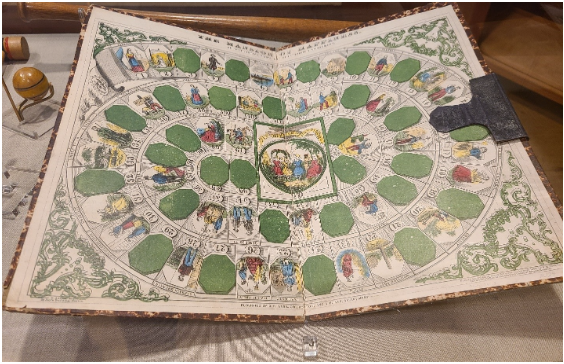
Marsh-Billings-Rockefeller NHP museum collection, MABI 13623
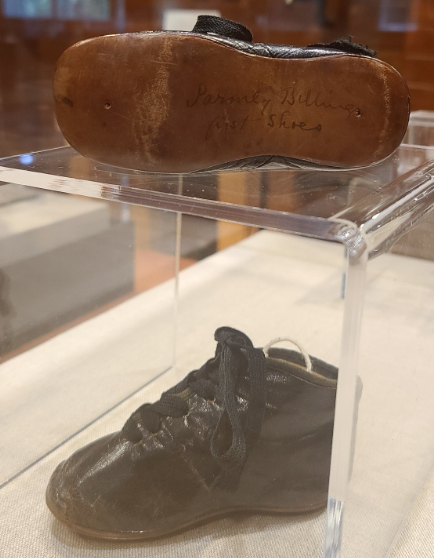
Marsh-Billings-Rockefeller NHP museum collection, MABI 9395
Parmly Billings
Shortly after their wedding, Frederick and Julia Billings welcomed their first child in 1863 naming him Parmly after Julia’s maiden name. Born with a spinal deformity that heavily affected his balance, he broke his arm twice in six-months. As the rebel of the children, Parmly always fibbed, played pranks, and teased his siblings. Eventually “outgrowing his boyish tricks,” he loved to spend time outside fishing, hiking, and swimming. The exhibit features a pair of Parmly’s baby shoes with Julia’s inscription “Parmly Billings’ First Shoes”. Interestingly, there are no other baby shoes associated with the seven Billings children other than Parmly’s in the parks collection. But after Mary Montagu (second daughter of Frederick and Julia) had a family of her own with local Woodstock lawyer, John French they saved a pair of baby shoes of their own, perhaps to celebrate their first born as well!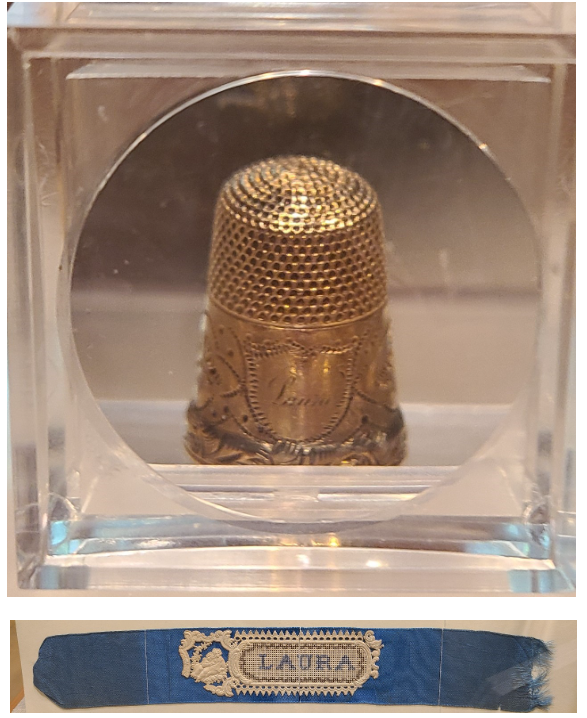
Marsh-Billings-Rockefeller NHP museum collection, MABI 5672 and MABI 6160
Laura Billings
Julia gave birth to her and Frederick’s first daughter Laura in 1864. Instructed by her mother, Laura developed an interest in sewing and embroidery at a young age. The exhibit features Laura’s gold thimble made up of a band engraved with quatrefoils and a shield, including her name in script. This thimble is a size five. Compared to other thimbles in the collection, its small size could indicate it was a gift to her as a child. While the thimble indicates youth, Laura’s ribbon bookmark, which was discovered inside her book Corinne by Madame de Stael (Paris, 1836) may indicate a more mature time in her life. Corrine is a love story and commentary on Italy which is a bit more mature of a theme. Perhaps she kept this memento of childhood close in whatever she was reading. The blue-ribbon bookmark has her name stitched around an embossed frame similar to ornamentation of the time period’s greeting cards.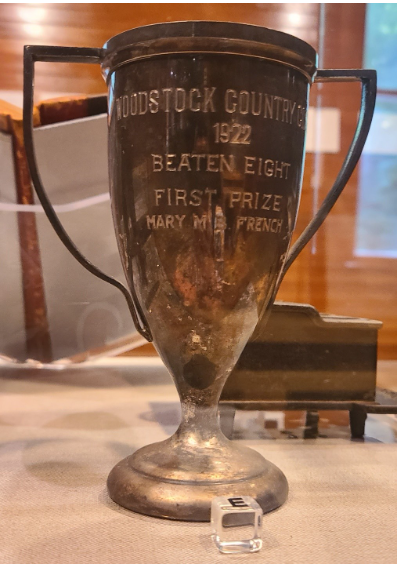
Marsh-Billings-Rockefeller NHP museum collection, MABI 2237
Mary Montagu Billings
Born in 1869, Mary Montagu Billings the second daughter born from Frederick and Julia Billings, was considered the most adventuresome and athletic of the sisters. Of all the sports she played, golf was her favorite. The exhibit features Mary Montagu’s trophy won at a golf championship, which is one of 16 in the collection. It’s engraved with “Woodstock Country Club / 1922 / Beaten Eight / First Prize / Mary M.B. French”. French being Mary Montagu’s last name after marrying John French in 1907. Mary’s love for the game was so strong that she had a nine-hole golf course laid out on her family’s property, along with a golf house.
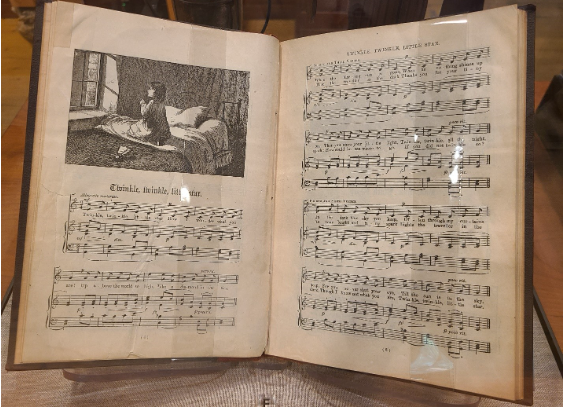
Marsh-Billings-Rockefeller NHP museum collection, MABI 3949
Elizabeth Billings
Frederick and Julia’s youngest daughter, Elizabeth, who was described as the “quiet” daughter, was born in 1871. Despite her quiet nature, Music always seemed to play a major role in her life, In the 1890’st there were two pianos in the Mansion’s parlor, so Elizabeth could play duets.2 The exhibit features Elizabeth’s book, Mother Gooses Nursery Rhymes and Nursery Songs, published by the McLoughlin Bros. in New York, NY. Her nickname “Lizzie” is embossed in gold on the front cover. It includes piano arrangements with woodcut illustrations – the book is open to “Twinkle Twinkle Little Star.” According to an inscription written on an interior page, Lizzie’s cousin, Elizabeth Parmly, gave it to her and perhaps played it with her in the Mansion. Even though Lizzie never had any children of her own, she grew up to be the fun "Dear Aunt", playing and singing hymns with her nieces and nephews, perhaps using the nursery song book she grew up with.
This article only details a few of the Billing’s children and their mementos of childhood. To see more come visit the entire The Billings Family: Youth in the Mansion exhibit in the Carriage Barn Visitor Center to see how the Billing’s children played in the Woodstock Mansion.
Works Cited
1Whitehill, Bruce. "American games: A historical perspective." Board Game Studies 2, no. 1 (1999): 119.
2Susan Porter, Susan Walton, and Erica Donnis, Historic Furnishings Report, vol. 1, The Mansion: Historical Data Marsh-Billings-Rockefeller National Historical Park Woodstock, Vermont (Porter/Miller Ink, 2013), 194.
